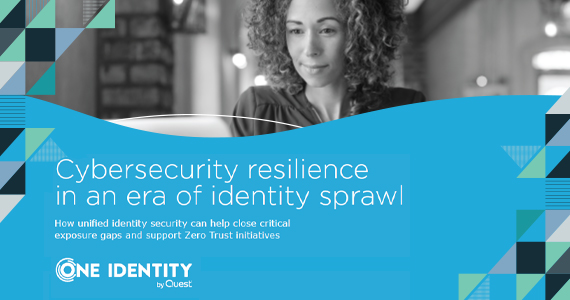Why do you need a unified identity security strategy? Well, because the daily work life of a CISO is difficult enough already, with the constant threat of digital break ins, the worry about lapses in security procedures, budget concerns, board committees, compliance requirements, and trying to keep up with family commitments. It’s a lot of stress. On the one hand, today there is less on-site infrastructure and fewer office-based users to worry about than in the recent past, but then on the other hand, so much of your infrastructure and operational resources are not onsite and out of your immediate control.
One of the biggest concerns today is identity security – as you have to worry about having an unprecedented number of remote users, third-party and SaaS apps that have access to your critical data. How do you protect your organization but also help to optimize its performance?
Each connected system – both internal and external – have unique processes for authenticating users, different ways it stores user-permissions data and often unknown security procedures. Essentially, each system and application is a silo of user accounts and data. It’s a fragmented environment.
This situation is reflected in the findings of a recent One Identity survey of more than 1,000 IT security professionals. It turns out that:
- Over half of respondents manage more than 25 separate systems
- 1 in 5 organizations manage more than 100 systems
- 25% of respondents say that in the last decade, the number of identities they manage has increased by a factor of 10 or more
- 95% report challenges in managing identities overall
This is a classic description of identity sprawl that is managed in a very fragmented way. It’s a very real problem that organizations of all sizes are facing as we move critical resources and functions to the cloud. Your user data (human and machine users) and systems data are now stored all over the place and if key elements of it – like privileged credentials – gets into the hands of threat actors, it could be very harmful to your organization.
Actually, ‘if’ isn’t the real worry, it’s ‘when’ that happens that is the concern.
As a CISO, I’m sure you spend too much time thinking about how do you stop your identity sprawl and get better control of your fragmented identity security management strategy to close potentially crippling cybersecurity exposure gaps? You can rest easier by centralizing management of user access and permissions to all your systems, platforms and apps, regardless if they are on-prem, in the cloud, a SaaS resource or a hybrid, multi-generational app. With our Unified Identity Security Platform, you can bring all your user data management and permissions processes under one single point of control.
This flexible platform enables you to start identity-security enhancements where the most pressing and critical needs exist and work from there.




